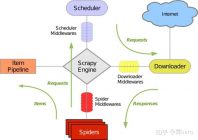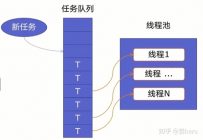3.7 异步迭代器
**什么是异步迭代器**
实现了 [`__aiter__()`](https://docs.python.org/zh-cn/3.8/reference/datamodel.html#object.__aiter__) 和 [`__anext__()`](https://docs.python.org/zh-cn/3.8/reference/datamodel.html#object.__anext__) 方法的对象。`__anext__` 必须返回一个 [awaitable](https://docs.python.org/zh-cn/3.8/glossary.html#term-awaitable) 对象。[`async for`](https://docs.python.org/zh-cn/3.8/reference/compound_stmts.html#async-for) 会处理异步迭代器的 [`__anext__()`](https://docs.python.org/zh-cn/3.8/reference/datamodel.html#object.__anext__) 方法所返回的可等待对象,直到其引发一个 [`StopAsyncIteration`](https://docs.python.org/zh-cn/3.8/library/exceptions.html#StopAsyncIteration) 异常。由 [**PEP 492**](https://www.python.org/dev/peps/pep-0492) 引入。
**什么是异步可迭代对象?**
可在 [`async for`](https://docs.python.org/zh-cn/3.8/reference/compound_stmts.html#async-for) 语句中被使用的对象。必须通过它的 [`__aiter__()`](https://docs.python.org/zh-cn/3.8/reference/datamodel.html#object.__aiter__) 方法返回一个 [asynchronous iterator](https://docs.python.org/zh-cn/3.8/glossary.html#term-asynchronous-iterator)。由 [**PEP 492**](https://www.python.org/dev/peps/pep-0492) 引入。
import asyncio
class Reader(object):
""" 自定义异步迭代器(同时也是异步可迭代对象) """
def __init__(self):
self.count = 0
async def readline(self):
# await asyncio.sleep(1)
self.count += 1
if self.count == 100:
return None
return self.count
def __aiter__(self):
return self
async def __anext__(self):
val = await self.readline()
if val == None:
raise StopAsyncIteration
return val
async def func():
obj = Reader()
async for item in obj:
print(item)
asyncio.run( func() )

